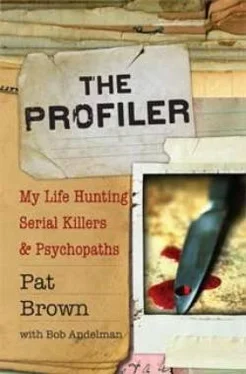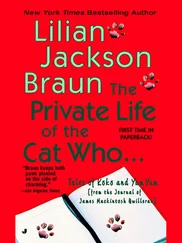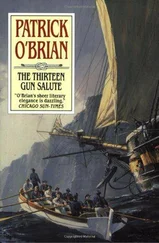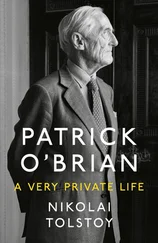1. Christine Landon was naked from the waist down. Nakedness does not necessarily indicate motive of a crime. Some victims are simply found in this state when the crime begins. In other cases, offenders remove clothing to delay identification or to eliminate evidence. In this case, I believe Christine was not fully dressed because she was showering and preparing for bed.
2. Christine was tied up. Tying up a victim does not necessarily indicate sexual intent. In bondage scenarios, yes, the victim would be tied. However, the limited restraints on Christine do not indicate a well-developed bondage scenario of a sexual sadist. The restraints on Christine were more indicative of control-control of the victim while removing her from the premises, control while placing her in the trunk of a vehicle, and control by keeping her restrained in the vehicle while driving.
3. Christine was stabbed in the breast area. The location of the stab wounds may make it appear that the assault was sexual. However, the heart is located underneath the breast and the breast can be just in the way when the offender attempts to kill the victim.
4. Semen evidence at the scene. Semen evidence proves only that the victim had a sexual encounter with somebody.
I believe the only crime the attacker intended to commit inside the residence was an attempt to abduct Christine Landon. The abductor wanted Christine to appear as though she never arrived home, or that she went back out again.
Since there were no other vehicles noted by Christine that concerned her, no vehicle noted earlier by the neighbors, nor was any vehicle seen leaving the scene after the murders were committed, the only car available for transporting a bound person was the victim’s own car. And since a sex crime or a homicide could be committed most easily in the victim’s house, there had to be a good reason to remove her. This was most likely so that the offender would not be identified as having some kind of relationship with Christine and so that a stranger might be suspected of abducting and attacking Christine elsewhere. The abduction would also have served to delay the discovery of the crime so that the body and other physical evidence would not be found too quickly. The delay in discovery would also aid the offender in establishing an alibi. Lastly, it was also possible that the abductor did not want the house to become a crime scene or “get messed up” with blood and other unpleasant emissions.
Christine had had company over on previous evenings so there was no way for an abductor to know if she would have company with her when she arrived home. It would therefore be unlikely that the offender would have hidden in the house awaiting her arrival. It would be far safer to observe the house from a safe location (in an abandoned residence next door or from another nearby secret location). The offender would be able to clearly observe the arrival of Christine in her car and to note that she was alone. The offender may have waited a bit longer just to be sure no one else followed her home. It was also possible that the offender arrived after Christine came home and, seeing no other vehicles or visitors, quickly entered the residence. If the offender had hidden in the house, it would be extremely unlikely he would have allowed her to get out of her clothes, take a shower, and, especially, answer the telephone call from her boyfriend before attempting to abduct her.
There were only two entrances into the house: through the front door and through a sliding glass door in the back. Entering the house through the front door could be accomplished either by knocking or with a key. Christine did not tell her boyfriend when he called that she had opened the door to anyone since arriving home, so the killer entered the house without her assistance. She had installed a chain lock on the front door. It would make sense that when she arrived home, she would have placed the chain back on the door. There was blood on the chain, indicating some possibility that the killer removed it to allow the marshal in.
Also, the killer would not want the neighbors across the street to see who was entering the house. This makes entering the house through the back more desirable. If someone had a key to the house, he could have entered the house earlier in the day and unlocked the sliding back door. The killer may have relocked the door after entering.
Shortly after her arrival, Christine took a shower in the downstairs bathroom. The phone rang and she left the shower, threw on a sweatshirt, and went to answer the phone. It was not clear whether the phone she answered was in the kitchen or the upstairs bedroom (although the upstairs phone is more likely considering Christine did not hear the offender enter the house nor would it appear the offender knew Christine was on the phone).
The crime scene behaviors indicated that the initial assault took place away from the location where the victim answered the phone, most likely in the upstairs hallway and quickly moving to the first floor.
The caller, Hugh Marshall, with whom Christine had just spent the evening, stated that during the conversation with Christine, he encouraged her to check the house (front and back door) to make certain it was secure. Hugh said Christine said she was uncomfortable with her estranged husband coming and going in the house and believed he had been there earlier that day. Christine put the phone down and went to check the house. She quickly encountered an intruder. She screamed and possibly said something more, but this was not confirmed. Marshall then hung up his phone and called Bob Dickinson. He followed that call up with one to the sheriff’s department.
I could not determine if the offender knew the caller was still on the phone when Christine encountered him. However, it would seem odd that, realizing she was screaming for help to a phone that was off the hook and that someone may have been calling the police to help her, the offender would take the time to tie her up and attempt to abduct her. I would expect the offender to either run out of there or immediately kill the victim and then clear out of the house. It was more logical to conclude that when the offender encountered Christine, he did not know she was even on the phone. Not until after she was tied up was the phone discovered off the hook and the receiver put back in place. It would also be nonsensical to tie up the victim after the murder of Bob Dickinson, because the first murder would eliminate any point in removing Christine from the house. Tying her up and carrying her out would slow down the killer’s escape. Christine must have been tied up immediately upon the offender and Christine’s meeting. This would mean the offender brought the materials along with the intention of tying up the victim.
Christine was tied up immediately upon encountering her attacker, and she had to be in the kitchen at the time Marshal Dickinson arrived at the front door. At that point, it was likely the abductor was in the process of leading Christine out of the kitchen toward the back door, her feet hobbled, hands tied, and a knife at her throat. The killer stopped to get the keys from her handbag on the desk, evidenced by the items that spilled out of the purse.
Christine was not gagged and she was on her feet at the time she was brutally attacked-demonstrated by the blood found on the bottom of her feet. Why did Christine’s attacker start his assault on her then? Most likely, the marshal had just knocked on the door and shouted out, “Christine? Are you in there, Christine?” The natural response for Christine when she heard the police marshal yelling her name would have been to scream for help. It was then the natural response of the offender to put his hand over her mouth.
Continuing with my hypothesis, from this point on, there would be no way to abduct the victim without wasting too much time and allowing the offender to be caught in the act by the police. Christine would need to be eliminated as quickly as possible at that point.
Читать дальше












